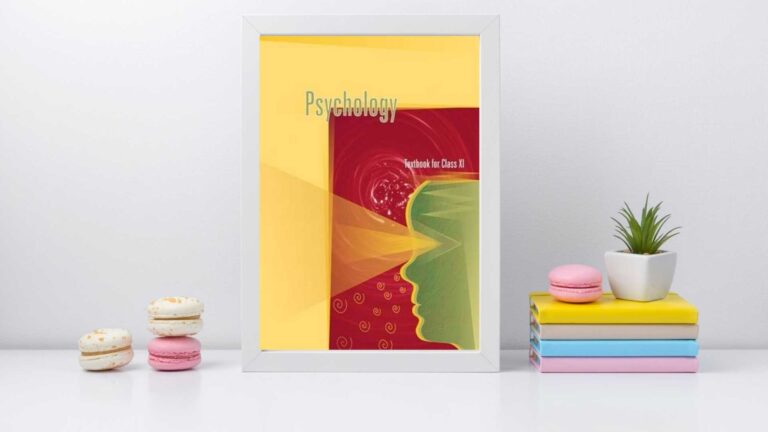
In this article, I’m going to summarise a few portions of the NCERT Class 11th Psychology Textbook. I think it is the best source to understand the basics of psychology. Whether you are a student or someone interested in psychology, this article will help you understand it a bit further.
Let’s just get into what psychology is.
Defining a discipline is a hard thing to do as it keeps on evolving and it has a variety of phenomena in it that can’t be fit into a single definition.
Let’s look at how psychology as a discipline evolved.
Psychology used to be a part of philosophy at the very initial stage of its development. The term “psychology” consists of two Greek terms: “psyche” meaning soul or mind, and “logos” meaning science or study of a subject.
We can say that the definition of psychology used to be, “Study of mind and soul”.
But since then, it has moved away from philosophy and established itself as a scientific discipline. Nowadays, psychology studies the processes underlying human experience and behaviour through various scientific methods.
It studies phenomena at various levels, such as: individual level, dyadic group level (two-person group level), and organisational level.
So basically, psychology evolved from a philosophical discipline to a scientific discipline.
The recent definition of psychology goes like this: “A study of mental processes, experiences, and behaviors.” As opposed to it being just a study of the mind and soul.
Now, how will we define mental processes, experiences, and behaviors?
MENTAL PROCESSES
It is also known as consciousness or awareness.
Mental processes are used when we think, feel, or understand. And these mental processes are reflected in our brains, but mental processes occur in our minds.
You might hold a view that the mind and the brain are the same thing, but it’s not like that. To understand it more clearly, read this: “The brain is composed of nerve cells and blood vessels, whereas the mind is not like that. While the brain has a definite shape, the mind does not have one. We can see and touch the brain, whereas it is not possible to do this with the mind. ” ([1]
Mental and neural activities overlap, but they’re not the same thing.
The mind does not have a structure or a location. It emerges and evolves as we interact with and experience the world around us. And these experiences and interactions get dynamically arranged in the form of systems which are responsible for mental processes.
For example, when we are trying to solve a problem, we are thinking about it. The thinking process is completely mental; it can’t be located or seen. And the thinking is reflected in the brain as the neurons start to show some activity.
Therefore, we can say the mind and the brain are interdependent and are not the same.
EXPERIENCES
Experience is something that is embedded in people’s minds (aka consciousness or awareness). It is completely subjective. Only the experiencer can be conscious of their experience. No one else can ever be conscious of it.
Psychologists are also very intrigued by studying different types of experiences, such as esoteric experiences. When a person enters a different level of consciousness due to meditation or drugs, it is known as an esoteric experience. These drugs may cause negative side effects, and the person taking the drugs may also become addicted to them.
Experiences are influenced by both internal and external conditions of the experiencers. For example, if you’re stuck in a traffic jam and you are late for your best friend’s birthday party, you’ll be irritated in this situation.
But if you’re stuck in a traffic jam with your best friend and don’t really have a place to go to, the experience might even be positive for you. You’ll keep talking to them and enjoy the ride.
As you can see from these examples, experience is affected by internal as well as external conditions.
BEHAVIOURS
Behaviours are the responses and reactions we make or activities we engage in.
If we touch something hot, our hands reflex back as a reaction. Our pounding hearts during a test Someone talking non-stop about a specific thing. These are all different kinds of behaviours.
Behaviours can be simple or complex, short or enduring.
Behaviours are generally of two types: overt or covert. Overt behaviour can be seen, but covert behaviour cannot be seen. If while angry, someone is shouting, they’re showing anger overtly, and on the other hand, if someone is angry and they’re being passive about it (aka passive aggressive), they’re being more covert about it.
Overt behaviours can be seen or observed by other people. Covert behaviours are internal and are hard to observe by others.
Some psychologists study behaviour as an association between stimulus and response; both can be internal or external.
I love it!
The thing I like the most is the use of basic examples which makes it easy to understand and relate. Otherwise, complex models are hard to understand and often cause the topic to be misunderstood.
Amazing
You describe very well.
Can you be more specific about the content of your article? After reading it, I still have some doubts. Hope you can help me. https://accounts.binance.com/si-LK/register-person?ref=V2H9AFPY
how to buy generic clomiphene no prescription clomid risks order generic clomiphene prices clomid generic where can i buy generic clomiphene no prescription how can i get generic clomiphene price buying clomid no prescription
Здесь вы найдете Telegram-бот “Глаз Бога”, позволяющий собрать всю информацию о гражданине через открытые базы.
Инструмент работает по фото, обрабатывая актуальные базы онлайн. Благодаря ему можно получить 5 бесплатных проверок и глубокий сбор по имени.
Инструмент актуален на август 2024 и охватывает аудио-материалы. Сервис сможет узнать данные в соцсетях и отобразит информацию за секунды.
найти через глаз бога
Это инструмент — выбор для проверки персон через Telegram.